- | 8:00 am
Inside the studio where Marvel superhero shoes are made
After 18 years of creating bespoke shoes for some of the most recognizable characters on screen and stage, custom-shoemaking shop Jitterbug Boy Original Footwear is closing down.
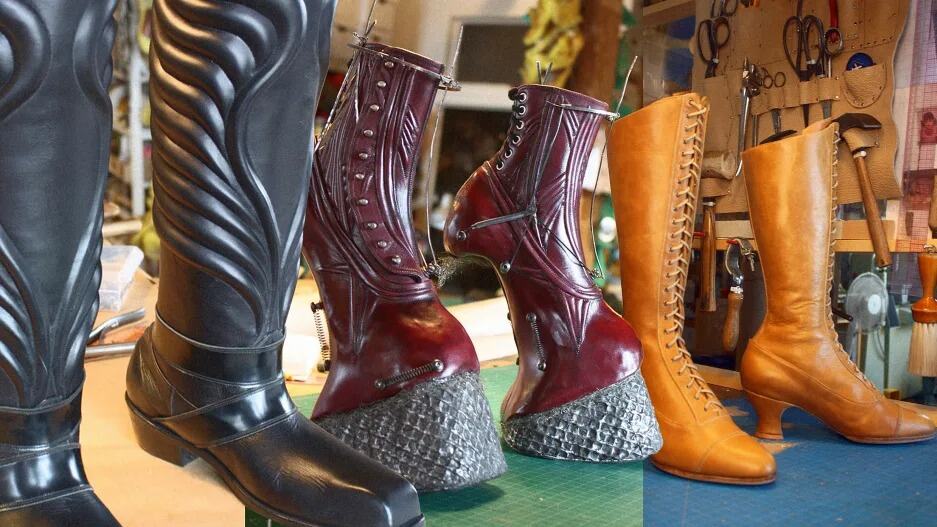
When walking into the custom shoemaking shop of Jitterbug Boy Original Footwear in Toronto, the air smells of leather, wood, and glue. Pairs of shoes and boots hang down from a 100-year-old wood ceiling. As Jeff Churchill, Jitterbug Boy’s founder and owner, shows me around the shop, I recognize on the shelves prototypes of superhero boots from a whole array of Marvel movies and a pair of red hoof boots, later recreated for the Lt. Saru character from Star Trek: Discovery.
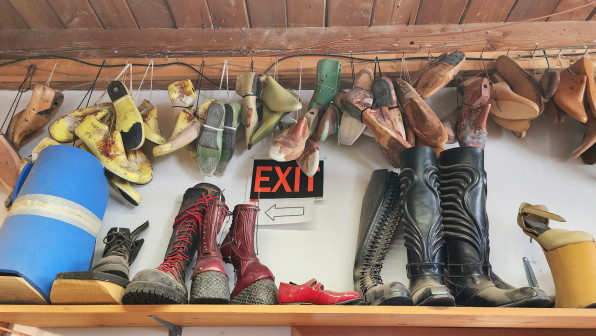
For more than 18 years, Jitterbug Boy has created custom shoes for major theatrical shows including Cirque du Soleil and the musical, Charlie and the Chocolate Factory; the movies Mirror Mirror and the recently released The Little Mermaid; and such television series as A Series of Unfortunate Events and Obi-Wan Kenobi. Yet, despite working on more than 600 productions, Jitterbug Boy’s name has appeared only once in the rolling credits. It is typical in the industry to credit the costume designer. And Churchill actually prefers it this way.
“I like the creative challenges and taking pride in what we’ve done, but it’s not about the name in lights,” he says. “It’s about us as a team, about what we can do.”
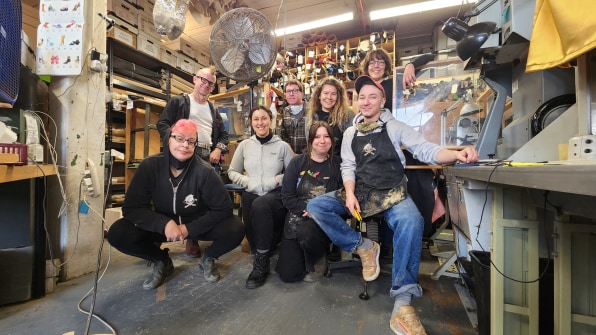
THE SOCIALIST SHOEMAKER
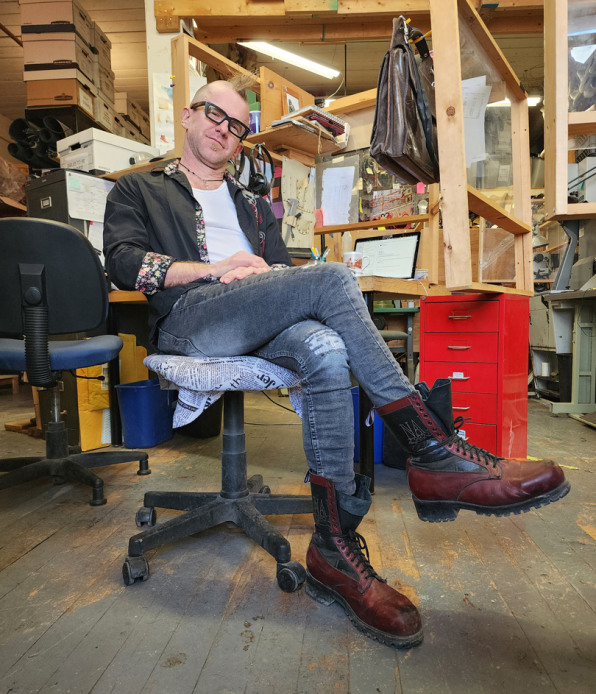
Jeff Churchill, founder and owner, of Jitterbug Boy Original Footwear [Photo: Dori Tunstall]
“People give me shit for making shoes for all these multimillionaire actors, but I don’t. If they are worn by Scarlet Johansen or Brad Pitt, that’s a coincidence,” he says. “I make shoes for the costume designer and the teams that are part of the same creative realm that I come from.”
That realm is theater, film, and television. Churchill started as a theater kid at 15 years old. He later studied to be a set designer, before falling into shoemaking for theater productions like Cirque du Soleil and later for films and television.
Churchill grew up in poverty, but he was steeped in his grandparents’ values of hard work, the arts, and being a good and generous person. This ethos has guided his work in custom shoemaking, which is a labor-intensive process that can require more than 200 steps. Churchill didn’t want to make shoes for Silicon Valley and Wall Street types who could easily afford them. Instead, he turned his talents to the performing arts where he could combine his skills in theatrical prop making and design.
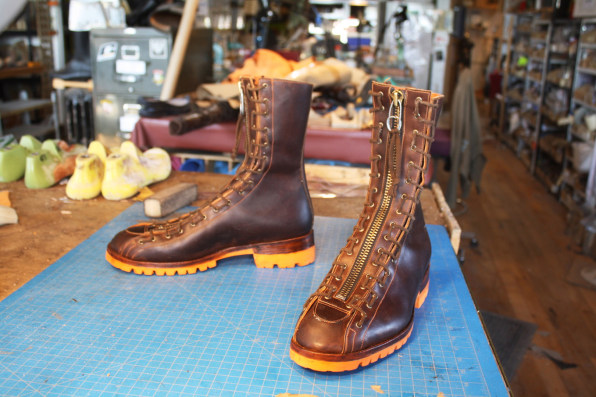
“We stick to the film and performing arts where people are used to paying for the amount of work that goes into making something like shoes,” he says. “They will pay what is reasonable because they are artists and artisans themselves.”

A CHALLENGING BUSINESS MODEL
Each shoe that Churchill and his team of artisans make starts with receiving a costume designer’s concept for the design and the required foot measurements. From there, Churchill creates a last, or the abstract model of the foot, that provides the structure for the shoe. He then creates a pattern and selects the materials, which might need to be dyed or manipulated to fit the design. Specialist stitchers cut and sew the materials to the template’s specifications, which can take up to four days depending on the complexity of the design.
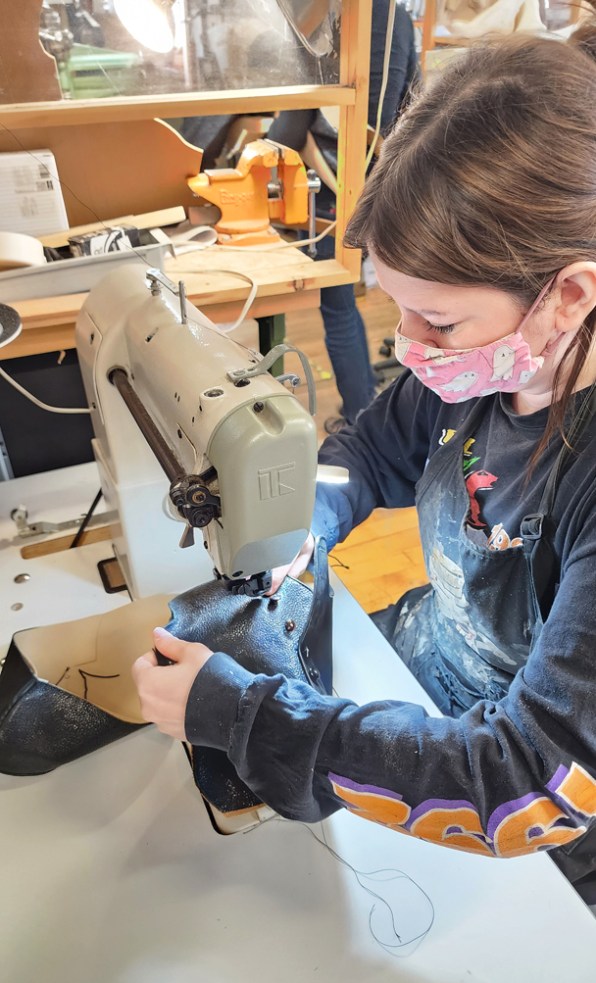
Once the design is cut, the shoe’s wet leather needs to be stretched across the last before it dries. Only then can the craft team begin putting the structure of the shoe together. The labor-intensive process ends with soling the shoe, which includes sculpting the sole and heel and assembling those pieces with the upper using glue, nails, and stitching.
At a minimum, making a pair of shoes requires a team of lead, stitcher, and crafter. It can take up to 16 hours to make a very simple pair to more than 50 hours for a more complex set, not including drying time.

While other shoemakers might be looking to 3D printing to reduce the human labor involved, Jitterbug Boy does not utilize 3D printing in house, though Churchill has collaborated with various companies that specialize in the technology. “There are definite things that can be advanced through things like 3D printing and 3D scanning, and it makes working from afar a lot easier, like when we were working on Thor: Love and Thunder,” Churchill says. “The technology of 3D printing is very cool, and it adds so much to a project but can’t replace someone like me, yet. We are a long way off before that.”
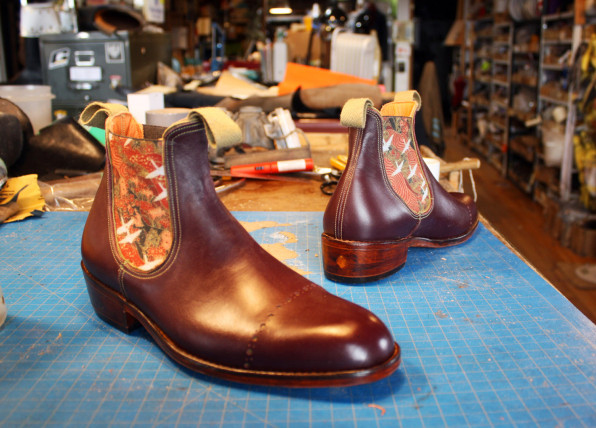
The labor and expense of custom shoemaking has made it difficult to sustain a profitable business model for Jitterbug Boy, especially after the closures and slowdowns of the COVID-19 pandemic. The business model of the custom shoemaker for the arts requires a balance of steady work, such as a big Vegas theater production and the lucrative but chaotic work in film and television. Before the pandemic, Jitterbug Boy had a balance of 25% of theatrical work and 75% film and television projects.
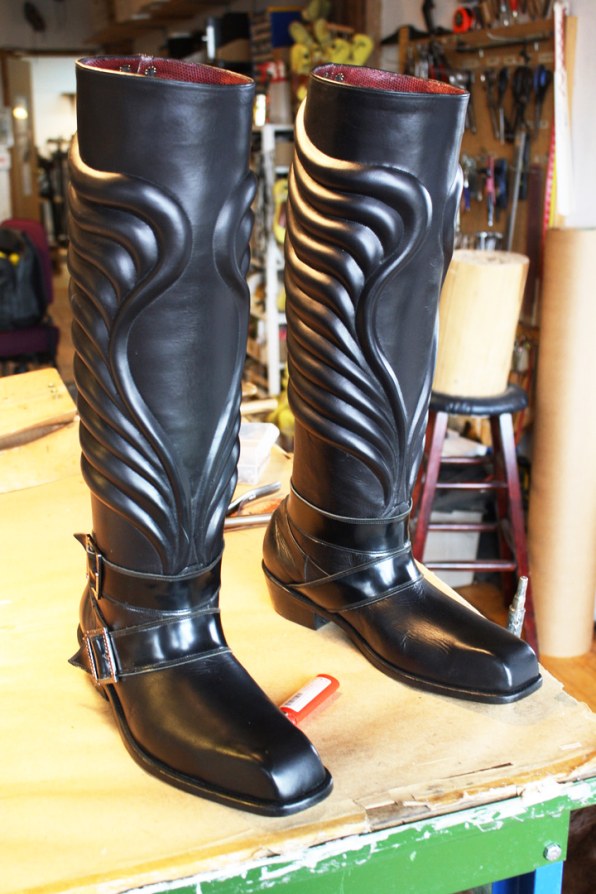
When the pandemic shut down theater productions, the business model collapsed. Churchill estimates that when the pandemic first hit, he lost $350,000 in a week and has lost $1.5 million in total. “In the three years since COVID, it’s been constantly having to feed the fire. We’ve done some really extraordinary work [over 80 shows], but also 90% of that’s just been to keep the doors open and make sure people have enough work to keep them employed,” he says, “I spend so much time keeping the business afloat now that’s taken me even further away from the actual creative work. And it’s just not financially possible anymore. It breaks my heart to break up this team, to close down this shop, but it’s also time. It’s way beyond time.”
What comes next for Churchill is a business model for custom shoemaking that is 90% meaningful and creative work. This means convincing film producers to create space for an in-house boot and shoemaker. “I’m really hoping that it can create a new position that might, in some ways, breathe a bit more life into the shoemaking industry,” he says. “Certainly, on the creative side, I’m hoping it can foster a new generation.”





































